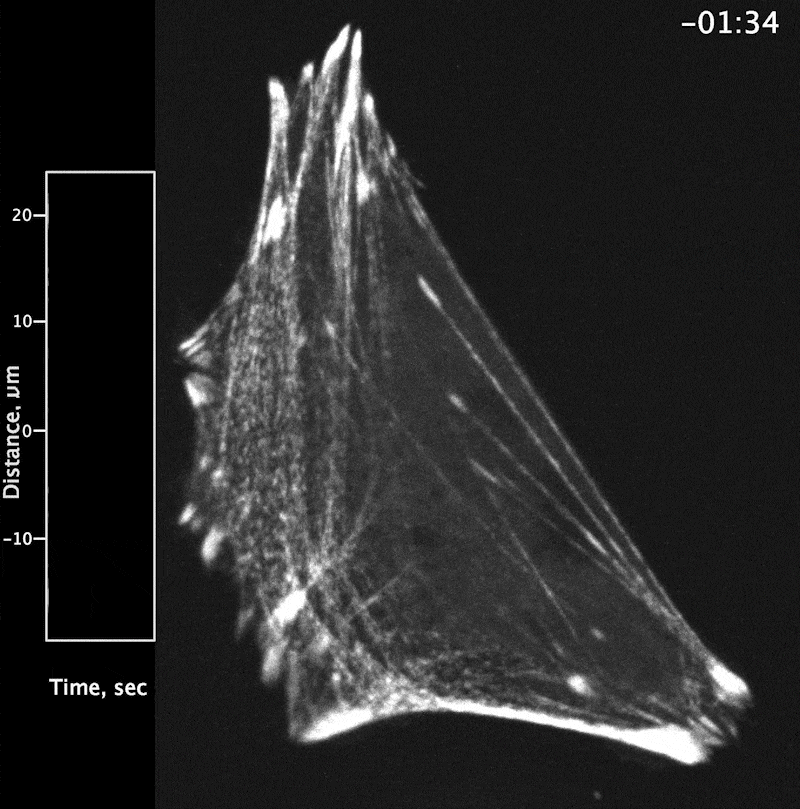Research
Mechanotransduction
Cells process mechanical cues to regulate their physiology. We study mechanosensing mechanisms in adhesions and the actin cytoskeleton in epithelial and endothelial tissue. Of particular interest is the mechanisms of force-sensing found within the superfamily of proteins containing LIM domains. This superfamily includes the Tes, Zyxin, Paxillin, Ajuba, and Enigma families and are ubiquitous to mechanotransduction pathways in cell-cell and cell-matrix adhesions.

Figure (above).Immunofluorescence images of actin (blue) and paxillin (purple) of fibroblasts plated on soft vs. stiff extracelular matrix. See Oakes et. al.
Selected References
- Evolutionarily diverse LIM domain-containing proteins bind stressed actin filaments through a conserved mechanism. Winkelman JD, Anderson CA, Suarez C, Kovar DR, Gardel ML. Proc Natl Acad Sci USA. 2020; 117(41):25532-25542. (PMID: 32989126) (pdf)
- Lamellipodium is a Myosin-Independent Mechanosensor. Oakes PW, Bidone TC, Beckham Y, Skeeters AV, Ramirez-San Juan GR, Winter SP, Voth GA, Gardel ML. Proc Natl Acad Sci USA. 2019; 115(11):2646-2651(PMID: 29487208) (pdf)

Figure (above).Immunofluorescence images of actin (red) and E-cadherin (green) of MDCK epithelial cells. See Maruthamuthu et. al.

Figure (above).Timelapse movie GFP-zyxin of a light-induced damage to a stress fiber in a fibroblast. See Winkelman et. al. and Anderson et. al.
